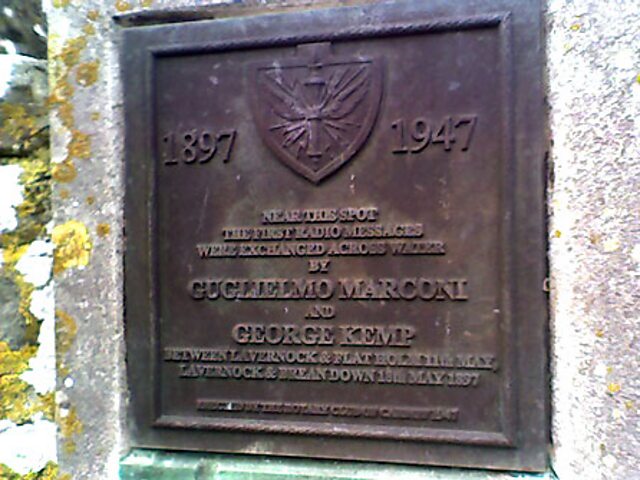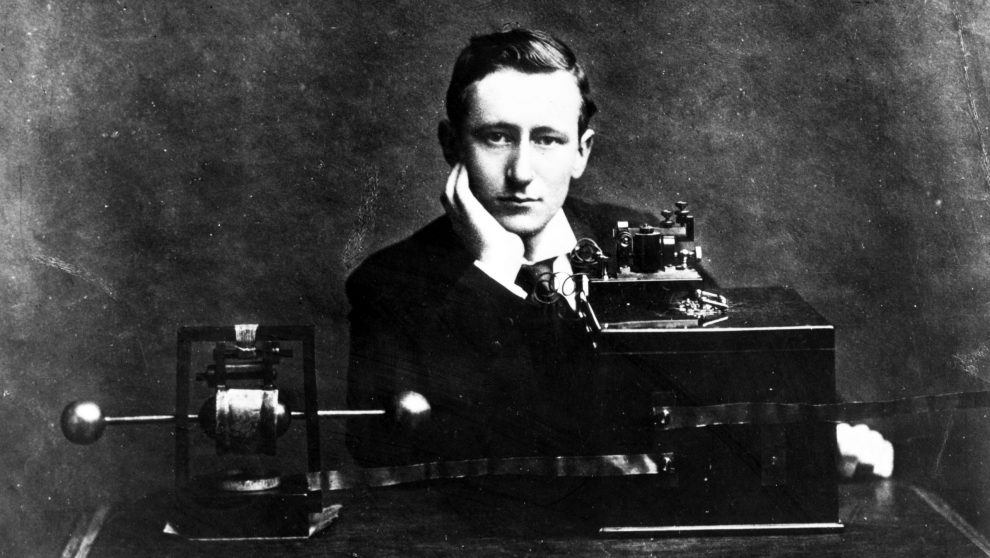RADIO as a medium has a long, rich history, that dates back to May 13th 1897 and Lavernock Point in the Vale of Glamorgan.
It was here that radio pioneer Guglielmo Marconi made telecommunications history, transmitting a radio signal across open sea for the first time.
Lavernock Point is a headland situated on the southern coast of the Vale of Glamorgan, overlooking the Bristol Channel with views across to Somerset. A few kilometres away, in the channel, are two islands, Flat Holm and Steep Holm, so-called because of their physical appearance.
It was from Lavernock Point to Flat Holm in 1897 that Marconi’s historic experiment took place.
This historic moment in Wales, achieved by an Italian, has a fascinating story.
Marconi was born on 25 April 1874 in Bologna, Italy. As a boy he became fascinated with science and electricity, and eventually began conducting experiments in radio waves at the family home.
Marconi’s goal was to create a system of long range wireless telecommunication, an idea which had been around for over 50 years but which nobody had managed to successfully bring to fruition. Soon he was able to transmit signals for more than a mile, and realised that his innovations may have commercial and military value.
Finding scant interest from the Italian authorities in his discoveries, Marconi moved to Britain in 1896 at the age of 21. In London he found a supporter in William Preece, engineer-in-chief at the British Post Office, then an important government department. Preece had himself transmitted Morse code signals using radio telegraph across Coniston Water in Cumbria.
Marconi began transmitting messages from the roof of the post office in London to other government buildings. In early 1897 he sent Morse code signals over a six kilometre distance across Salisbury Plain. Having established that overland wireless communication was viable, he decided to attempt another breakthrough: the first ever transmission over open sea.
Marconi was assisted by George Kemp, a Cardiff-based Post Office engineer who suggested the south Wales coast as the ideal location for the experiment. Following several days of testing, Marconi took up position in a field on Lavernock Point while Kemp and his nephew Herbert were positioned three miles away on Flat Holm. Both locations had a 100ft mast erected, each with an aerial at the top.
Kemp kept a detailed diary of the events, describing Marconi’s tests and setbacks before his experiments finally succeeded.

He wrote: “Mr Marconi’s apparatus was set up on the cliff at Lavernock Point, which is about twenty yards above sea-level. Here we erected a pole, 30 yards (27 m) high, on the top of which was a cylindrical cap of zinc, 2 yards (1.8 m) long and 1-yard (0.91 m) diameter.
“Connected with this cap was an insulated copper wire leading to one side of the detector, the other side of which was connected to a wire led down the cliff and dipping into the sea. At Flat Holm Mr Preece’s apparatus was arranged, the Ruhmkorff coil also giving 20-inch (510 mm) sparks from an eight-cell battery.
“On the 10th May experiments on Mr Preece’s electro-magnetic transmission method were repeated, and with perfect success.
“The next few days were eventful ones in the history of Mr Marconi. On the 11th and 12th his experiments were unsatisfactory – worse still, they were failures – and the fate of his new system trembled in the balance.
“An inspiration saved it. On the 13th May the apparatus was carried down to the beach at the foot of the cliff, and connected by another 20 yards (18 m) of wire to the pole above, thus making an aerial height of 50 yards (46 m) in all. Result, The instruments which for two days failed to record anything intelligible, now rang out the signals clear and unmistakable, and all by the addition of a few yards of wire!”
Marconi sent an initial message in Morse code. It read: “CAN YOU HEAR ME”.
Shortly after, Marconi received a reply from Kemp: “YES LOUD AND CLEAR”.
The recording slip for the first message is now kept at the National Museum of Wales.
There then followed a further series of technical messages in both directions, to test settings and sound levels. The tests continued for several days, in different weather conditions and with various adjustments to the telegraph equipment.
The experiment was so successful that Marconi’s men chose to relocate the Flat Holm equipment across the Bristol Channel, to Brean Down Fort near Weston Super Mare.
They managed to transmit messages for a distance of nearly 10 miles, proving that the technology was viable and useful.
Marconi’s involvement with the Post Office ended after he registered patent rights in his Wireless Telegraph and Signal Company. He was, however, joined by George Kemp who resigned from the Post Office to become Marconi’s head of engineering development.
In 1901 Marconi established the first radio link across the Atlantic Ocean, and in 1909 shared the Nobel Prize in Physics with fellow pioneer Karl Ferdinand Braun, in recognition of their “contributions to the development of wireless telegraphy.”
In 1948, 50 years after the open sea experiments, a bronze plaque commemorating the historic achievements of Marconi and Kemp was unveiled by the Cardiff Rotary Club in the churchyard of St Lawrence in Lavernock.
The small hut in which he kept his early telegraph equipment still stands near the cliff edge near Lower Cosmeston farmhouse.


















Add Comment